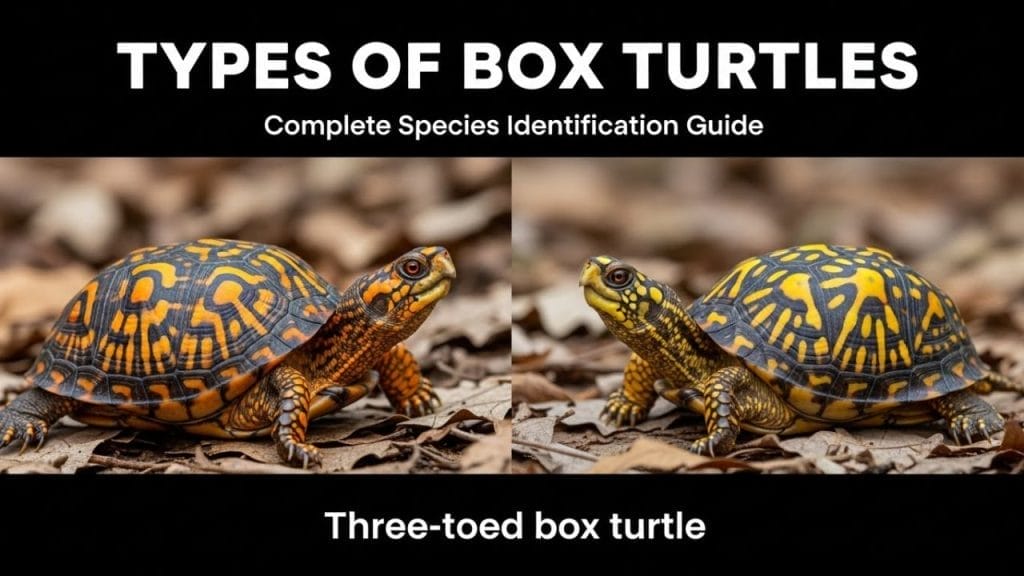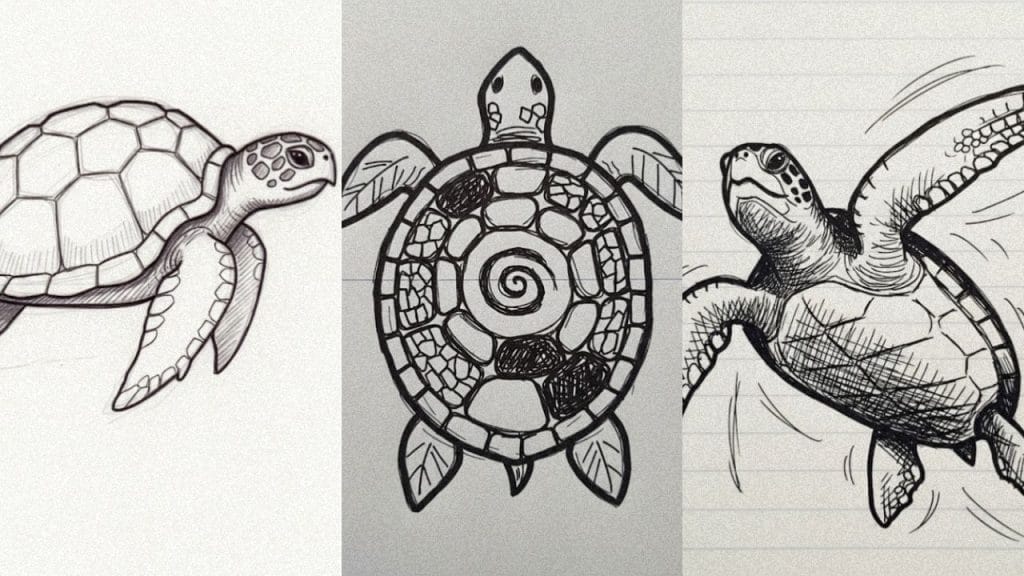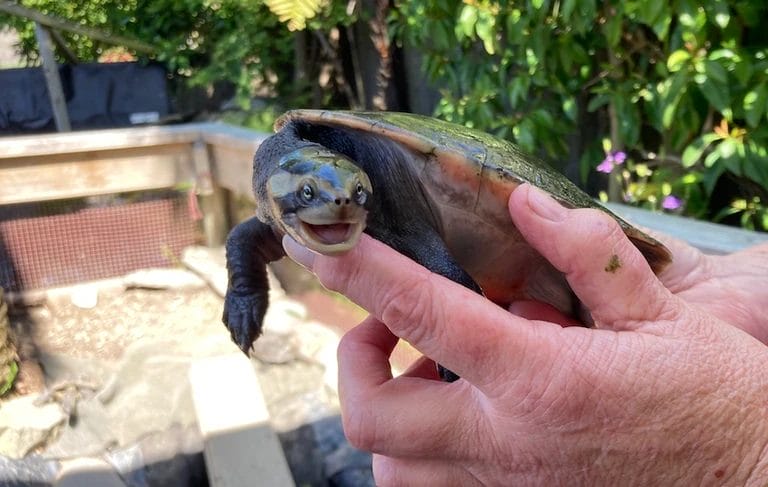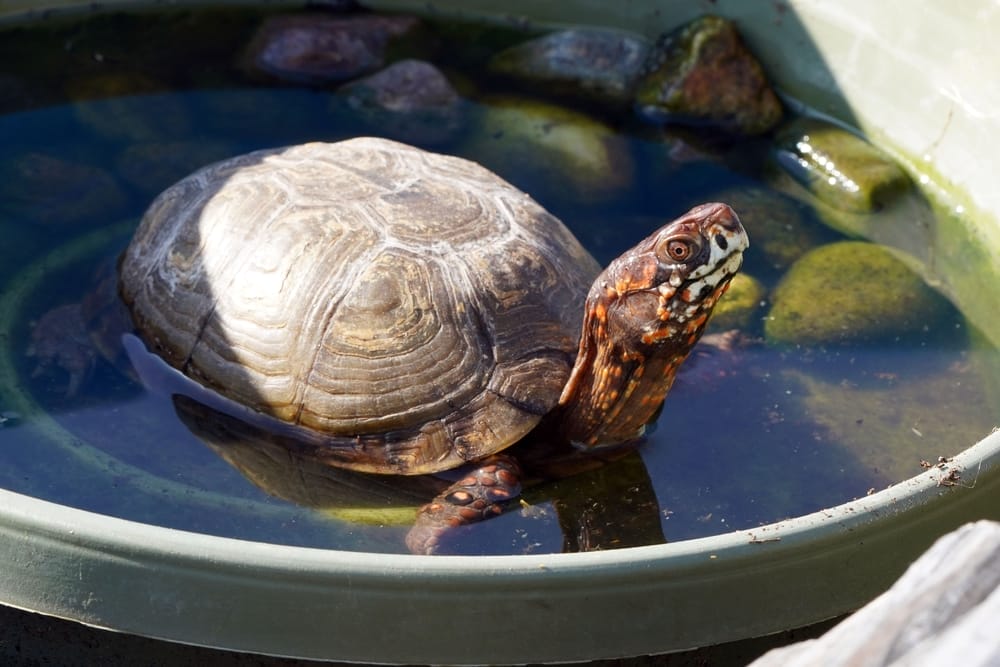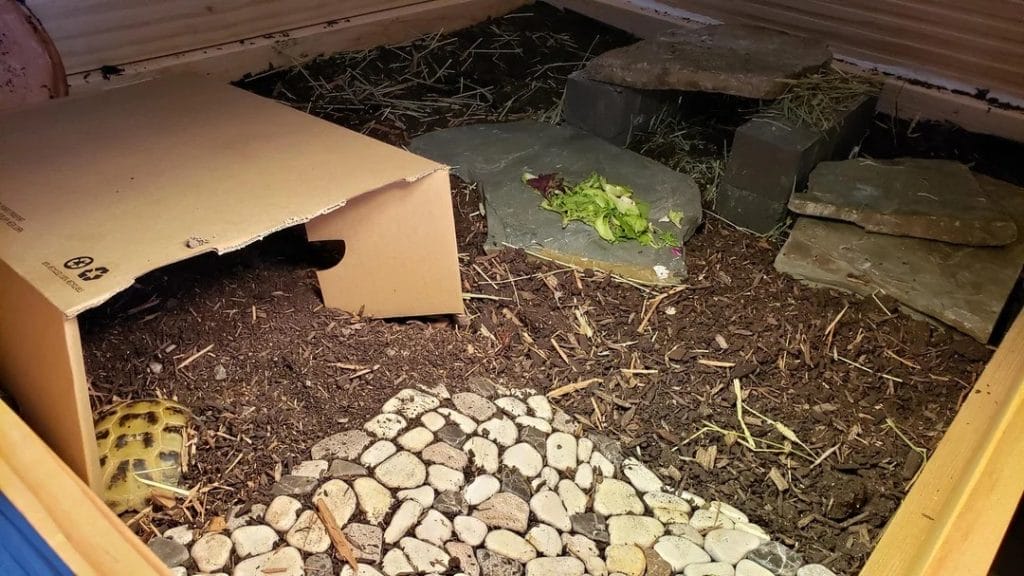How Long Can Turtles Hold Their Breath?

This post was created with help from AI tools and carefully reviewed by a human (Muntaseer Rahman). For more on how we use AI on this site, check out our Editorial Policy.
Turtles are aquatic or semi-aquatic reptiles. They spend most of their life in water. Hence, many people think turtles can breathe underwater like fish. But turtles cannot breathe underwater. They can hold their breath for a long time. So, how long can turtles hold their breath?
Turtles normally dive in the water for 4 to 5 minutes and come up for a few seconds for air. But many freshwater turtles can hold their breath for 20 minutes to an hour if they have to. Sea turtles can even hold their breath for 2 to 7 hours.
In this article, I will tell you how long different species of turtles hold their breath underwater so that you can prevent your pet turtle from getting drowned. You may also want to know how turtles can hold their breath for so long!
How Long Can Different Species of Turtles Hold Their Breath?
Turtles are reptiles that love water. They need the water for various reasons, such as swimming, eating, drinking, hiding, and hibernating. But they cannot remain in water constantly as they cannot breathe in water. If they cannot get out of water for oxygen, they will drown in the water and die.
However, turtles have developed the habit of holding their breath underwater for a long time. On average, many species can hold their breath for 40 to 60 minutes at room temperature. It can also extend to several hours when they sleep underwater.
But there are different species of turtles and not all of them can hold their breath for the same amount of time. In fact, even the same species of turtle cannot hold breath for the same amount of time.
Crucial factors like species, age, and water temperature determine how long a turtle can hold its breath underwater. Depending on these factors, some turtles can spend only minutes underwater without breathing while others can spend hours.
Factors That Control Turtles’ Breathing Underwater
Species
Aquatic and semi-aquatic turtles can hold their breath longer than land turtles. Here is a list of different species of turtles and how long they can hold their breath during regular activities underwater:
| Turtle Species | How Long They Hold Breath |
|---|---|
| Red-eared Sliders | 30 to 35 minutes |
| Eastern Box Turtle | 10 to 15 minutes |
| Painted Turtles | Several hours |
| Map Turtles | 20 to 30 minutes |
| Snapping Turtles | 35 to 50 minutes |
| Leatherback Turtles | 1 to 2 hours |
| Sulcata Tortoise (Land) | 1 to 2 minutes |
| Russian Tortoise (Land) | 1 to 2 minutes |
As you can see, the aquatic species can hold their breath underwater longer. Sea turtles can stay underwater without oxygen for hours. On the other hand, land turtles, like box turtles, can remain underwater for only 10 to 15 minutes.
Then we have tortoises that live mostly in the lands. These land turtles can hold their breath for only 1 to 2 minutes. They are not good swimmers like aquatic and semi-aquatic turtles. So, they will drown in water.
Age of Turtles
The age of a turtle impacts its ability to hold breath. A healthy adult turtle is much more capable of holding breath underwater than a baby turtle. With time, they train their body to remain in water longer.
The young turtles are not fully mature and do not have much experience in holding breaths underwater. Therefore, they often need to swim to the surface for air every few minutes.
Water Temperature
Water temperature is another factor to determine how long a turtle can breathe underwater. When the water is warm, a turtle is more active. Hence, their metabolism remains comparatively higher which means it will require more oxygen. So, the turtle has to come to the surface more often.
If the temperature gets below 50 degrees Fahrenheit, turtles slow down their metabolism rate. Thus, it goes into hibernation. A turtle can spend 2 to 5 months in hibernation without coming to the surface to breathe air!
This Hilarious Turtle Book Might Know Your Pet Better Than You Do
Let’s be real—most turtle care guides feel like reading a textbook written by a sleep-deprived zookeeper.
This one’s not that.
Told from the snarky point of view of a grumpy, judgmental turtle, 21 Turtle Truths You’ll Never Read in a Care Guide is packed with sarcasm, sass, and surprisingly useful insights.
And hey—you don’t have to commit to the whole thing just yet.
Grab 2 free truths from the ebook and get a taste of what your turtle really thinks about your setup, your food choices, and that weird plastic palm tree.
It’s funny, it’s honest, and if you’ve ever owned a turtle who glares at you like you’re the problem—you’ll feel seen.
Can Turtles Hold Their Breath for Hours?
Interestingly, most turtles can spend hours without air when they are sleeping underwater or hibernating underwater. For example, sea turtles can sleep 4 to 7 hours underwater without breathing.
Freshwater turtles can also go on without air for several hours while sleeping underwater. They can do it as they slow down their metabolism during this time. Slow metabolism means less use of oxygen. Hence, turtles can remain underwater for hours.
How Can Turtles Hold Their Breath For So Long?
You may wonder how turtles can hold their breath underwater for so long. Like any other living being, turtles need oxygen to survive. They come up to the surface to take in the air and dive into the water. Now, remember, oxygen is not available only in the air. It is also available in the water.
Many turtle species can absorb the oxygen in the water, which helps them to remain in the water for so long. But how do they absorb the oxygen? They cannot breathe in the water, right?
Well, prepared to be surprised! Turtles can absorb oxygen underwater through their cloaca. The process is known as cloacal respiration. The cloaca is the opening on the tail of a turtle. It is the reproductive organ as well as the butt. The cloaca of a turtle is full of blood vessels, which is why turtles can absorb oxygen directly from the water.
Besides the ability of cloacal respiration, turtles have nares located above their mouth. As a result, they do not have to get out of the water completely to take in the air. They just have to expose the nares for a few seconds. Hence, it seems that turtles remain in the water for so long.
Finally, we can say that turtles have a unique respiratory, skeletal and muscle system that allows them to remain underwater for so long. They also train their body to stay in water for survival.

How Can Turtles Stay Underwater During Hibernation?
When the temperature goes below 50 degrees Fahrenheit, turtles hibernate. But turtles actually do not go in full inactive mode. So, this state of partial inactivity is best known as brumation.
Turtles can survive underwater for months during brumation. Even if they do not go to the surface for oxygen, they constantly fulfil their oxygen requirements through the cloaca. Also, they slow down their metabolism during hibernation. They become almost inactive. Hence, they require less oxygen.
Thus, turtles can remain underwater for 2 to 5 months without coming to the surface for oxygen. But hibernation is a dangerous process. Many turtles cannot survive this period. So, it is better not to let your pet turtle hibernate.
How Can Sea Turtles Hold Their Breath for So Long?
Sea turtles are amazing turtle species that can hold their breath underwater longer than freshwater turtles. Normally, they will come up for air every five to ten minutes. Like all other turtles, they do not want to stress their body. Therefore, they will come to the surface frequently to breathe in oxygen.
But if the circumstances require, sea turtles can hold their breath for up to 2 hours while being fully active. Here is an interesting fact: sea turtles can hold their breath for 4 to 7 hours while sleeping underwater! Sea turtles spend most of their life underwater as they feel safer and secure there. So, they have trained their body to sleep underwater.
Sea turtles can spend this long period by slowing down their metabolism during sleep. It allows them to use less energy and oxygen. Also, they use their cloaca to absorb oxygen from the water. Thus, they hold their breath for such a long time.
How Long Can Baby Turtles Hold Their Breath?
As mentioned before, age is a crucial factor in a turtle’s ability to hold breath underwater. Baby turtles are not fully developed, and they are inexperienced. So, they cannot stay underwater without air for as long as adult turtles. Baby turtles need oxygen to remain active in the water. They come up to the surface every 4 to 5 minutes to breathe in the air for a few seconds.
So, if you have baby turtles in the tank, do not let them stay submerged in the water for over 10 to 15 minutes. If the baby turtles cannot get to the surface for air, they can drown to death.
How Long Can A Turtle Hold Its Breath While Sleeping?
An aquatic turtle can hold its breath for up to 1 hour during the active period during the day. But when sleeping at night, the species can stretch this time.
According to different sources, freshwater turtles can sleep up to 5 hours without interruption. Of course, this period varies with the species and the surroundings. On average, during 4 – 7 hours of sleep, the turtles may have to come to the surface to breathe twice or thrice.
Likewise, sea turtles also enjoy uninterrupted sleep for 4 – 7 hours. Reports say that loggerhead sea turtles can sleep up to 10 hours underwater.
But why do turtles hold their breath longer while sleeping? Well, the answer lies in the physical functions of the species.
Usually, a drop in temperature by 5 – 10 F is recommended at night. The low temperature allows the turtles to enjoy a slowed heartbeat and oxygen consumption rate. Therefore, the creatures can stay underwater on the stored oxygen for long periods.
You will find the science behind the turtle’s sleeping from here.
Can Turtles Drown in The Water?
Turtles are certainly remarkable for holding their breath underwater for a long time. But they have their limitations. Once their lung capacity gives out, turtles will drown in the water. Again, how long it takes a turtle to drown in water depends on its species, age, and level of oxygen in its body.
Many turtles get caught in fishing nets and drown in water when they can no longer hold their breath. Similarly, pet turtles can drown in tank water if caught in tank accessories.
So, keep turtle-friendly accessories in the tank. Some turtle species, like the box turtles, are not even good swimmers.
If you find your turtle drowning, retrieve it from the tank immediately. There is a strong possibility that your turtle will not die right after drowning. So, you can try reviving your turtle. Here is what you have to do:
- Take out the turtle from the water immediately. Then hold its tail or shell. Its head should point downward.
- Now gently hold on to the base of the head. Then pull the neck and push back. Repeat the action. It will help to get out the water.
- After a while, water should drip out of the mouth of your turtle. When the water stops coming out, put your turtle on a flat surface.
- Next, pull and push back the front legs of your turtle. Keep repeating the action so that the lungs can start working again.
- You should do the same pull and push action with the back legs of your turtle. After a while, your turtle should be able to spit out the water from its lungs. Then it will take a few deep breaths.
If you are lucky, your turtle can be revived with these steps. Do not forget to take your turtle to the vet right after you revive it.
How Long Can Snapping Turtles Hold Their Breath
Snapping turtles are excellent hunters. They hide under the muddy bottom of a lake or river and attack their prey. These turtles can hold their breath underwater for 25 to 35 minutes. Alligator snapping turtles can extend holding their breath to 50 minutes.
While performing activities such as swimming, diving, hunting, or fighting predators, snapping turtles increase their use of oxygen. So, the time of their holding breath can lower down to 10 to 15 minutes for stress.
However, snapping turtles can sleep underwater holding their breath for 4 to 6 hours. During this resting period, their heartbeat reduces to just 10 beats per minute from 25 beats. Moreover, they can lower their heartbeat to only 1 or 2 beats per minute during hibernation. Hence, they can spend months underwater without breathing.
How Long Can Red-Eared Sliders Hold Their Breath?
Red-eared sliders normally come out for air every 5 to 7 minutes of diving. They are quite active underwater and do not spend their time idly. But this species can hold its breath for 30 to 35 minutes.
However, this time can vary depending on the age and health of the red-eared slider. In cold temperatures, red-eared sliders slow down their activities. Hence, they can manage to stay underwater longer than usual.
How Long Can Painted Turtles Hold Their Breath
Painted turtles spend most of their life in the water. So, they have a high tolerance for holding their breath underwater. A healthy adult painted turtle can hold its breath underwater for several hours. But like all other turtles, the painted turtle comes to the surface frequently to breathe oxygen.
A painted turtle will hold its breath underwater only when it has no other choice. It will lower its metabolism during sleep to remain underwater for hours.
How Long Can A Leatherback Turtle Hold Its Breath
Leatherback turtles are one of the largest turtle species in the world. These sea turtles have the ability to hold their breath underwater longer than freshwater turtles. They will come to the surface to breathe in oxygen whenever they can. However, they can hold their breath for 30 to 45 minutes underwater if circumstances require.
Again, leatherbacks are sea turtles. Hence, they can decrease their metabolic activities to stay a long time underwater. In fact, a healthy leatherback turtle can sleep for 4 to 7 hours without coming to the surface for air.
Can Baby Turtles Breathe Underwater?
Baby turtles cannot breathe underwater. In fact, even adult turtles cannot breathe underwater. But turtles can hold their breath underwater for a long time. You may have heard that turtles are capable of cloacal respiration. Yes, they can, but not all species of turtles are capable of butt-breathing.
Like adult turtles, baby turtles can hold their breath underwater. However, turtles can breathe underwater as they do not have to get their head out of the water every time. They just have to get their nostrils out of the water to breathe in air.
The nostrils have a unique adaptation that allows them to close off their lungs’ opening when underwater. It prevents water from entering and enables them to remain underwater for a long time. Thus, baby turtles are able to do activities such as foraging for food, escaping predators, and regulating their body temperature.
How Often Do Turtles Need To Breathe?
How often turtles need to breathe depends on several factors, such as the turtle species, their level of activity, age, and the water temperature.
Aquatic turtles are better at holding their breath than terrestrial turtles. Hence, they do not have to come to the surface as often as terrestrial turtles. Also, they need a few minutes to fill their lungs with air.
For example, aquatic turtles like painted turtles and sea turtles can hold their breath for hours, so they need to come to the surface frequently.
On the other hand, box turtles are not adapted to swimming and living in the water. So, they have to come to the surface frequently every few minutes for air.
Another crucial factor is the activity level of a turtle under the water. Turtles that are actively swimming or foraging for food need to surface more frequently to take a breath, as they are using more oxygen. So, an active turtle has to breathe in the air ever 3 to 5 minutes.
On the other hand, turtles that are resting or sleeping can remain underwater for extended periods without needing to take a breath. A resting freshwater turtle may come to the surface every 20 to 35 minutes and return under the water to rest or sleep.
Finally, the water temperature impacts a turtle’s breathing. Warmer temperature increases the metabolic rate of turtles. The turtles have to use more oxygen stored in their body. Therefore, they have to breathe frequently to fill the need for oxygen.
Conclusion
By now, you must have a good idea about how long turtles can hold their breath. The turtle species, age, water temperature, and activities of a turtle influence the time it can hold its breath. Nonetheless, we can say that turtles are remarkable for holding their breath underwater for hours.
Turtles know their limits and will come up to the surface to fill their lungs with oxygen. If you do not want your pet turtle to drown in the water, avoid using accessories that obstruct their way to the surface.

About Author
Muntaseer Rahman started keeping pet turtles back in 2013. He also owns the largest Turtle & Tortoise Facebook community in Bangladesh. These days he is mostly active on Facebook.


